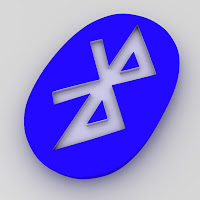Sometime windows 7 hardware devices are not working properly.cause of some windows update problem or corrupt files.so you need some update driver for devices working properly.If you have a hardware device that isn't working properly with your computer, you probably need an updated driver. There are three ways to update a driver:
Use Windows Update. You might need to set Windows Update to automatically download and install recommended updates.
Install software from the device manufacturer. For example, if your device came with a disc, that disc might contain software that installs a driver for the device.
Download and update the driver yourself. Use this method to install a driver that you download from the manufacturer's website. Do this if Windows Update can't find a driver for your device and the device didn't come with software that installs a driver.


To update drivers using Windows Update
You can check Windows Update anytime to see if it has found updated drivers for your hardware, especially if you recently installed a new device. Then, you can install the updated drivers. Here's how:

Click to open Windows Update.
In the left pane, click Check for updates.
If there are any available updates, click the links to see more information about each update. Windows Update tells you if an update is important, recommended, or optional. Each type of update might include drivers. For more information, see Understanding Windows automatic updating.
On the Select the updates you want to install page, look for updates for your hardware devices, select the check box for each driver that you want to install, and then click OK.
There might not be any available driver updates.
On the Windows Update page, click Install updates

If you are prompted for an administrator password or confirmation, type the password or provide confirmation..
Notes
Some updates require you to restart your computer.
Windows Update will tell you if the updates were successfully installed.


To set Windows to install recommended updates
To get all available driver updates for your hardware, set Windows to install recommended updates. You can set Windows to automatically install important and recommended updates or important updates only. Optional updates aren't downloaded or installed automatically. To get all available updates for your devices, periodically check Windows Update for optional updates. For more information, see Understanding Windows automatic updating.

Click to open Windows Update.
In the left pane, click Change settings.
Under Important updates, click an item in the list.

You can decide which updates to automatically download and install.
Under Recommended updates, select the Give me recommended update the same way I receive important updates check box, and click OK.

If you are prompted for an administrator password or confirmation, type the password or provide confirmation.
You can also allow anyone using your computer to install updates by selecting the Allow all users to install updates on this computer check box.


To download and update a driver yourself
It's best to let Windows install device drivers automatically. But if Windows can't find a driver for your device, and the device didn't come with driver software, you can look for a driver on the device manufacturer's website. Driver updates are often available in the support section of such sites.
Once you find the updated driver, follow the installation instructions on the website. Most drivers are self-installing—after you download them, you usually just double-click the file to begin the installation, and then the driver installs itself on you computer.
Some devices have drivers that you need to install yourself. If you download a driver that isn't self-installing, follow these steps:
You must be logged on as an administrator to perform these steps.

Click to open Device Manager.

If you are prompted for an administrator password or confirmation, type the password or provide confirmation.
In the list of hardware categories, find the device that you want to update, and then double-click the device name.
Click the Driver tab, click Update Driver, and then follow the instructions.

If you are prompted for an administrator password or confirmation, type the password or provide confirmation.
Notes
Printer information is not included in Device Manager. To see if a printer is installed or to manually update printer drivers, open Devices and Printers. For more information, see Install a printer.
To find out if your hardware (or hardware you plan to buy) is compatible with this version of Windows, go to the Windows Compatibility Center website. This website contains a comprehensive list of devices that have been tested to work with this version of Windows.





















